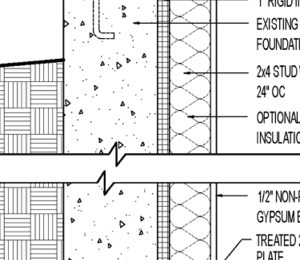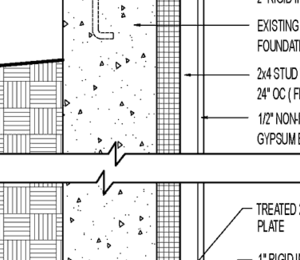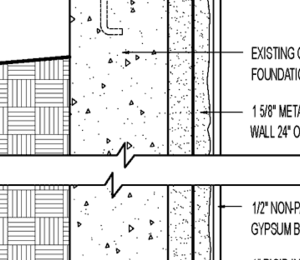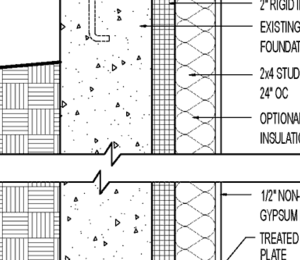The toughest details are those that have to match up with someone else's work, or those done — even done well — when energy was really cheap. These details are a collection of some common — and tough — dovetails of existing work with retrofits or additions. Bear in mind that green remodeling means creating a new operating regime that is better, not worse, than the one that may well have been working just fine before. Integration of energy efficiency, moisture management, and indoor air quality is much more important and challenging in remodeling than in new construction.
GBA shows more than a half dozen different retrofit basement wall insulation systems. The critical aspect is almost always what level of water or vapor the wall must manage as it increases thermal performance of the basement.
Existing foundation walls (and basement floors) are sometimes wet, usually damp, and seldom dry. Rarely do they have perimeter drainage systems, capillary breaks between masonry and wood (or soil) or insulation. To raise the performance of existing foundation and basement floors, you have to make them manage moisture BETTER than they currently do because you are going to insulate and air seal them, significantly decreasing their drying potential.

This article is only available to GBA Prime Members
Sign up for a free trial and get instant access to this article as well as GBA’s complete library of premium articles and construction details.
Start Free TrialAlready a member? Log in



